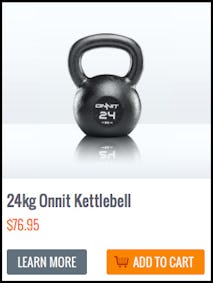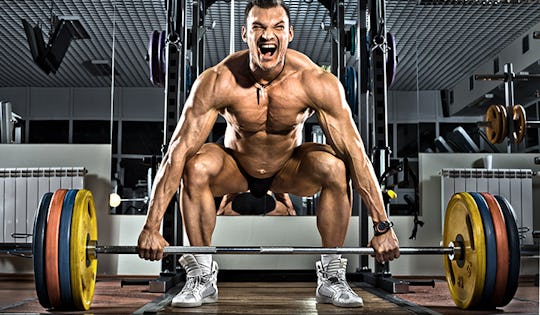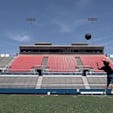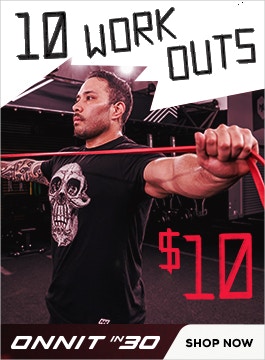 Although there are tons of differences between training Pros and Joes, there are most certainly more similarities than you might think. After all, we are all people; we travel, we sit, we eat, we play with kids and mess with social media; we have jobs and other hobbies outside of work or school that cause lots of stress and mechanical deficiencies over time.
Although there are tons of differences between training Pros and Joes, there are most certainly more similarities than you might think. After all, we are all people; we travel, we sit, we eat, we play with kids and mess with social media; we have jobs and other hobbies outside of work or school that cause lots of stress and mechanical deficiencies over time.
With bad habits and a majority of the day spent in poor postural positions, there’s a lot of corrections and therapy to perform on a regular basis. While I don’t know all the differences and similarities of training a professional athlete vs training an average Joe, I am going to share some of the big things that I have experienced over the years from working as a PT in a regular gym, to owning a private warehouse gym, to currently working as the head strength coach for the WWE Performance Center in Orlando.
Pros & Joes Both Need Different Things Person By Person
The actual physical training aspect is only a fraction of the issues that need to be considered when training a Pro or a Joe. Being a pro in any sport or profession does not necessarily mean you’re an advanced athlete in the gym. You may have tons of movement and mobility issues that need to be addressed, you may actually be weaker than you realize, or you may have specialized in your craft for years and totally skipped the gym.
That means you’ll need to structure a very basic and generalized training plan. In this case, we start from the very beginning; learning how to satisfactorily perform the basic movement patterns and full ranges of motion from pushing, pulling, squatting, hinging, carries, and core work. A simple linear progression with lots of mobility works great for these guys.
Conversely, the professional might be a total badass, and my major job at that point is simply to make sure that the lights are turned on and they don’t get hurt. They are the top tier athletes that can do anything in the gym and make great progress. We all love to hate that guy, but they make great athletes. These guys seem to be able to eat anything they want and have ripped 6-pack abs, training sporadically doing whatever they want and make crazy gains.
For that guy, I can show some specialization exercises that may help improve his position or profession. In my case, working with aspiring WWE athletes, the goal is to build a combination of peak performance and physique. However, to be honest, many of them do not care about squat and deadlift PR’s. They care about how they look on TV and are perceived in the eyes of the audience.
Of course this means they want to perform well, but that doesn’t always correlate to actually wanting to work harder in the gym for all of them. Of course, most Pros kill it in the gym, but occasionally the last thing the Pro wants to do after a hard day in the ring is change his sweaty shirt for the sixth time and head back to the gym.
Much of the training we do in the gym is based on what the athlete, Pro or Joe, does for the majority of the rest of the day. If he spends much of his time driving or hunched over a laptop, we need to fix those problems. If he spends much of his time getting his arms and legs twisted up in a “figure 4 leg lock,” and landing on his back from the top turnbuckle, we have a totally different set of issues to combat.
In short, always assess the athlete on a regular basis as their situation changes almost daily, and utilize a flexible training program that allows the athlete to make substitutions, regressions, and progressions when necessary.
Pros & Joes Don’t Have The Same Training Schedule
Mentality is a huge factor when training athletes. One major difference between Pros and Joes is the fact that to be a Pro, you have to show up everyday, and perform your best, even when it’s the last thing you want to do. It’s literally your job to do so. As an average Joe, you can pick and choose when you feel like training and when you don’t.
Scheduling is an issue that has pros and cons in itself. For the Joe, they need to make time to hit the gym on their own; they can go when they want, or they need to make time before or after other life activities and responsibilities. Pros, on the other hand, usually get paid to train and in many cases
it is already scheduled into their day. If an athlete is scheduled to train at 8:00 am and they are not responding well to an earlier morning training, but they cannot switch to afternoon training sessions, they may lose progress or face other repercussions, possibly costing them a career. Some people say that they would love to get paid to train everyday, but be careful what you wish for.
When you take something that you love to do as a hobby, then are forced to do it regularly in very intense conditions, it takes an extremely different toll on your mental state of mind. That thing you used to love may eventually become your arch nemesis. Some people grow to hate it, particularly if they have a different training style than the coach.
But ultimately, training is your best friend and savior; it’s there to keep you safe and healthy. Even though people get a little beat up in the gym pushing their bodies to the limit, it’s really their best friend in the long run. That which doesn’t kill us only makes us stronger.
Pros & Joes Should Be Training The Exact Same Way (Sort Of)
Now that we got some of the intangibles out of they way, I know that people like to know a specific program that The Rock, John Cena, and Arnold Schwarzenegger used to get to the top of their careers. While I can’t tell you any specific programs that they did, I can tell you that they all did a lot of heavy lifting to build strength and a ton of high rep workouts to build size.
I call that “Power Building” and it’s how I describe my basic training philosophy. I use a general template and adjust it accordingly for all my athletes based on their goals and abilities. My programs last anywhere from a month to several months based on the goal, but the general philosophy remains forever. One major difference between Pros and Joes is the fact that to be a Pro, you have to show up everyday, and perform your best, even when it’s the last thing you want to do. It’s literally your job to do so. As an average Joe, you can pick and choose when you feel like training and when you don’t.
“Methods are many, principles are few, methods may change, but principles never do.”
How To Train Joes & Pros
My workouts consist of seven parts; not all parts are created equal and are not used during every workout. I look at each workout as a prescription, and the required dose will be dependent on the athlete, regardless of Pro or Joe.
1. General warm up: a few minutes getting mentally and physically prepared.
2. Joint mobility, soft tissue work, muscle activation.
3. Specific warm up: light variations of the main exercise for the day.
4. Primary lift: building athletic strength & performance.
5. Secondary lifts: building musculature and durability to support athlete.
6. Conditioning: sport specific conditioning, not random ass kicking.
7. Intense stretching: recover tired muscles and prepare for the next workout.
This is my template and I use it for everybody. It works, you just need to know what exercises to prescribe and in what doses. If you have a 22 year old professional athlete training in the afternoon in Florida in the summer, he will need a very small dose of a general warm up; just make sure he does a few light sets first and assess his proficiency of movement, then load the hell out of him accordingly.
If you have a 40-year-old accountant in the New England winter in the morning, you had better make sure that those joints and muscles are very warmed up before the big stuff comes. Actually, a decent warm up and movement prep could be the most important thing that guy does all day. No need for max effort squats and benching, a few goblet squats and push ups could be his primary work for the day. The Pro is going to revolve his training program around big, compound movements like squats, pressing, deadlifts, cleans, and heavy carries. So will the Joe, just in different doses, always assessed, progressed, and adjusted accordingly.
Conditioning the Pro & Conditioning the Joe
The majority of the Pros conditioning actually comes on the field, on the court, or in the ring, but we do some specific conditioning in the gym to make sure they are well prepared for their sport. A boxer is going to need an extremely different type of conditioning than a mother of four who likes to swim and play tennis at the local club on weekends, so you need to program accordingly. Stretching is an art and if done properly it can be extremely effective at improving people’s quality of life. It should not be neglected.
As I said, there’s a lot of similarities and differences between training Pros and Joes, but I believe if you have a strong philosophy, focus on the individuals needs, goals and abilities, and consider using the above template as a guide, you could start a Pro and a Joe in very similar places in a training program. They will certainly progress at much different rates and accomplish much different things after a few months of training, but that is ok.
Pros Must Look Like Pros, Joes Only Need To Look Like Joes (Even If They Don’t Feel That Way)
Most Joes don’t need as much bodybuilding movements as a Pro whose body is being judged while half naked, but let’s admit it, everyone wants to look good naked. Many superstar wrestlers want to have an extreme physique, so bodybuilding plays a big role in what we do. I just make sure that athletic movement and strength takes priority over aesthetics.
Actually, that’s one of the biggest aspects of my job, holding these guys accountable for doing the big movements when they don’t feel like it. They can’t just flounder in the gym when they’re tired simply doing some curls and bench presses and calling it a day (yes, Pros do that too at times).







)





